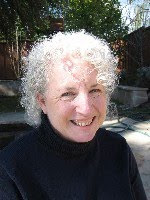In one week, I have read, listened and thought about nothing but technology and education. My peers and professors are engaged and passionate about understanding the challenges and the benefits of technology as part of the educational process. I have only begun to scratch the surface.
I have had at least 50 ideas thrown at me this week that are good, solid, usable resources from the Web. At least half of them are good for K-8. We are expected to go in and try them to see how they can be used, so I have tried out as many as I can.
Competent people have been researching the current issues in educational technology for at least the past fifteen years. Before that, it was not considered a real field of study, yet administrators have been putting computers in their schools for closer to twenty-five years, sometimes with only the hope that their teachers would figure it out.
The teachers in the program here come from all over the world and from all kinds of schools but we all wrestle with similar issues around the use of technology in school. Each one of us faces slight variations on these same challenges but everyone is determined to figure out how to make technology work for us.
Newspapers were first published in 1690, but they didn’t hit critical mass until the 19th century and readership has been declining through most of the 20th century. The Internet is about 40 years old and the World Wide Web started in its current form in 1992. The Internet has been a ubiquitous part of our lives since 2002. We have more equitable access to information and access to more information than ever before. The quality, accuracy and validity of that information varies widely and we need to educate ourselves and our children about how to be discerning consumers of information.
Human beings are social creatures and it is one of our basic needs to communicate. These technologies have allowed us to communicate more widely, more often, more easily than at any time in history. We need to learn a new set of rules around ethics and etiquette because the old rules don’t apply anymore. I think about that fact that many people lament the loss of face-to-face communication but this new communication allows us to stay even closer in touch with family members and friends even when their lives take them far away from us.
These technologies are slowly breaking down the barriers that kept the atrocities in Rwanda quiet. Handheld devices, cell phones and Twitter allowed the world to see the election in Iran and its aftermath. These technologies may have indirectly influenced some of the Mullahs to speak out against the outcome of the election. It is our responsibility as educators in the 21st century to learn about what these technologies are and work to understand what their potential is. Our students will know what they are. Lets help them learn how to use them for good.
Friday, July 10, 2009
Wednesday, July 1, 2009
Finding vision at NECC, Washington DC
Last Monday I set out to attend my first NECC (National Educational Computing Conference) after being in my new job as Director of Technology at my school for just two weeks. My sister-in-law handed me a polished stone as she was dropping me off at the airport and the word vision was etched into the dark, smooth stone. I slipped it into my pocket as I stepped through the airport doors. I am excited about my new job which will require an expansive and expandable vision. After two days at the conference which culminated in a keynote address by Erin Gruwell, The Freedom Writers Diary, I am filled with the possibilities for a vision that engages students and teachers in learning that is relevant, authentic and all those things learning in the 21st century is supposed to encompass, a vision that includes our parents an administration and board in creating exactly what we want for our children today and tomorrow. I am inspired by the teachers and professors and business people I met at the conference who are working to make technology accessible and affordable for all so our children can be prepared for a future that we adults cannot quite see because it is nothing like the future we saw when we were their age. So as I try to process all the ideas my conference colleagues shared with me, I keep finding the polished stone in my pocket to remind me to keep the vision in front of me as it takes shape. I am exhilarated by the enthusiasm and passion of these progressive teachers and schools I saw and am committed to making our school progress towards becoming better than it already is. Just like the Marines, I want our school to be all it can be. The conference confirmed what I believed intuitively and gave me ideas about how to make it happen!
Subscribe to:
Comments (Atom)
